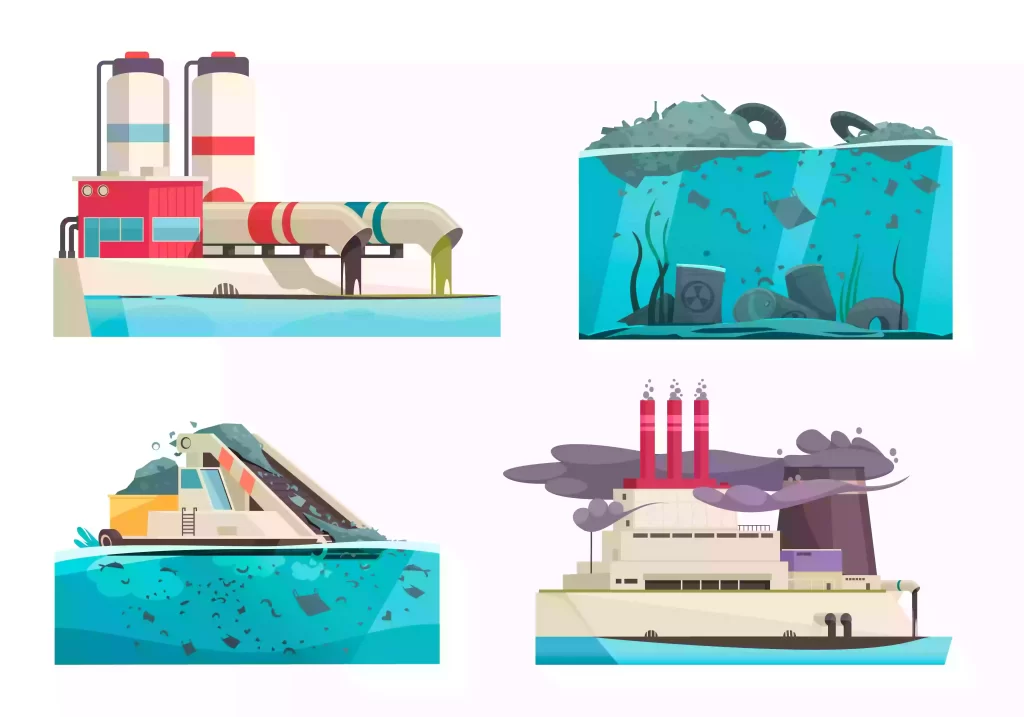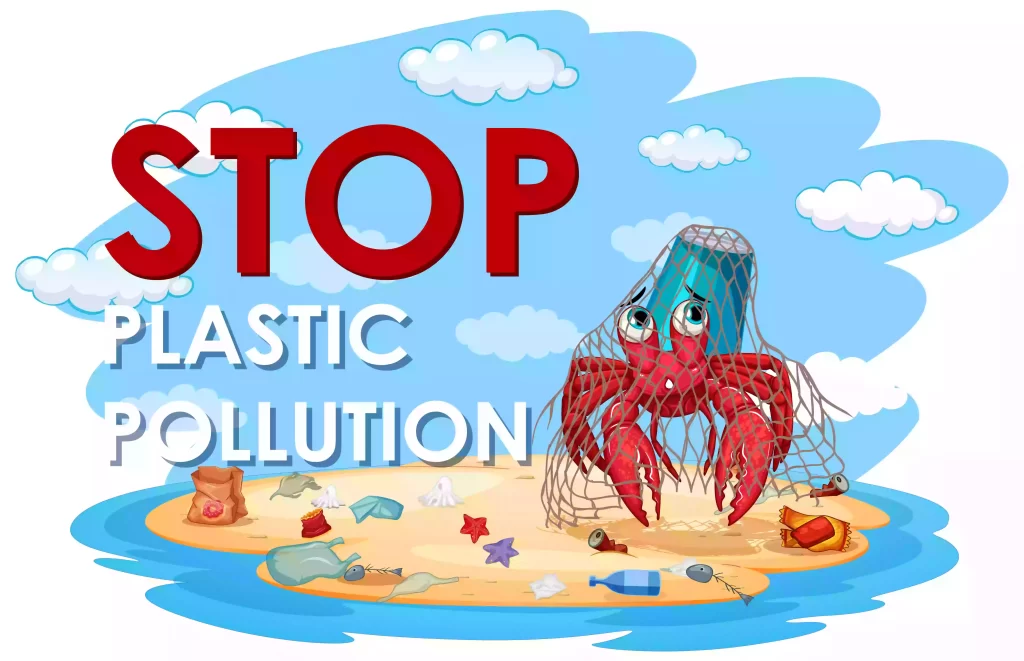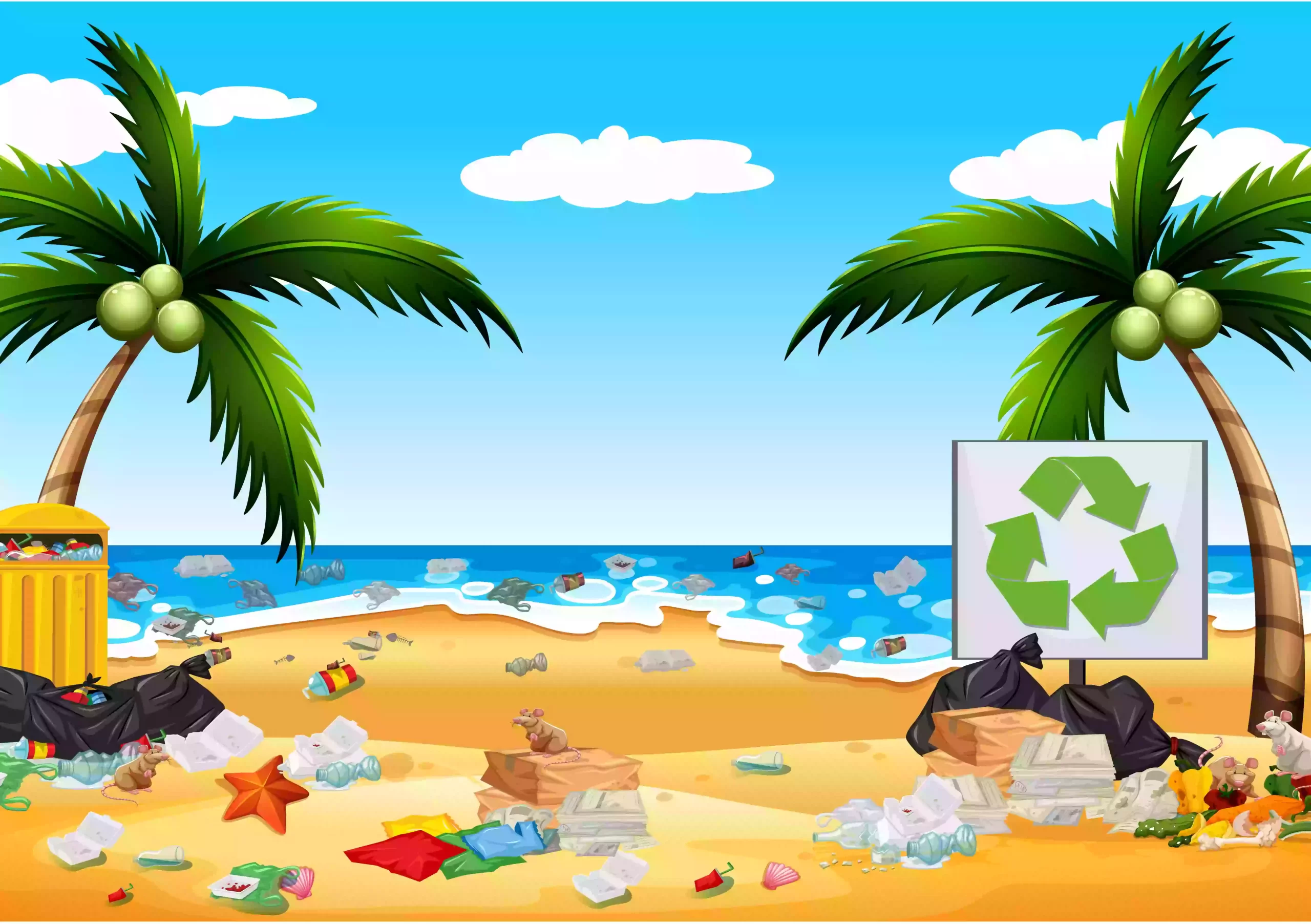Essay on Water Pollution for Students in English

Essay on Water Pollution
Water pollution is a huge problem that we face on a global scale, and it poses a threat to human health and the environment, but it is only getting worse.
Water is essential for life, and it is necessary for all forms of life, including humans, plants, and animals. Without water, we would not be able to survive.
However, water can also be harmful if it is polluted. Pollution includes anything that makes the water unsafe to drink, use, or even swim in. There are many ways that water can be polluted, and each year, millions of people worldwide suffer from water pollution problems.
Water pollution can come from many different sources, including households, factories, and mines. Households can waste water by not using it properly or by using it to wash dishes and clothes instead of watering the plants. Factories can pollute the water they use to produce products by releasing chemicals into the air or into the river or lake they use for production. Mines can release toxic metals into the water when they are extracting minerals.
All of these sources of water pollution have a negative impact on human health and the environment. They cause environmental damage, create health risks, and damage crops and wildlife. In some cases, these pollutants have even caused significant floods or storms.
We need to take action to protect our water resources from pollution. We can start using less water ourselves and by helping to protect the water resources of our friends and neighbors.
What is Water Pollution
Water pollution results from harmful chemicals and microorganisms discharged into water bodies without adequate treatment.
The pollutants can cause environmental damage, such as causing increases in water temperature, reducing the oxygen levels in the water, leading to fish kills, and creating an unpleasant odor.
The primary sources of water pollution are factories, homes, automobiles, and agriculture.
Importance of Water
Water is an essential part of life, and it is the liquid that sustains all living organisms and helps regulate the climate. Without water, we would not be able to survive. Unfortunately, water pollution is a severe problem affecting people’s health and the environment.
Water pollution comes from many sources, including sewage treatment plants, factories, and cars. When these pollutants get into waterways, they can cause harmful effects on both human and environmental health.
Water pollution can cause respiratory problems, skin irritation, and even cancer, and it can also damage crops, fish populations, and marine ecosystems.
Fortunately, there are ways to reduce water pollution. Cities can work to improve their waste management systems, and factories can use more efficient technologies. Individuals can also help by reducing their water resource consumption and helping clean up polluted areas.
Water is an essential part of life, and it is the liquid that sustains all living organisms and helps regulate the climate. Without water, we would not be able to survive. Unfortunately, water pollution is a severe problem affecting people’s health and the environment.
Water pollution comes from many sources, including sewage treatment plants, factories, and cars. When these pollutants get into waterways, they can cause harmful effects on both human and environmental health.
Water pollution can cause respiratory problems, skin irritation, and even cancer, and it can also damage crops, fish populations, and marine ecosystems.
Fortunately, there are ways to reduce water pollution. Cities can work to improve their waste management systems, and factories can use more efficient technologies. Individuals can also help by reducing their water resource consumption and helping clean up polluted areas.
Type of Water Pollution
There are different types of water pollution. Some water pollutants can be harmful to our health and the environment, while others can simply cause aesthetic problems. The following is a list of the most common types of water pollution:
- Point source pollution refers to pollutants that come from a single identifiable source, such as a factory or power plant.
- Nonpoint source pollution refers to contaminants from various sources, such as landfills and agricultural runoff.
- Microplastic pollution refers to tiny pieces of plastic that have been broken down into smaller and smaller pieces and can be found in lakes, rivers, and oceans.
- Harmful algal blooms are caused by toxic algae blooms that can produce dangerous toxins that degrade water quality and pose a severe risk to aquatic life.
Causes of Water Pollution
Water pollution is caused by various factors such as improper disposal of waste, lack of awareness about water conservation, and industrial activity. To make matters worse, some pollutants can be very heavy and slowly sink to the bottom of lakes or rivers, where they can contaminate water supplies.
In the United States, one of the leading causes of water pollution is the discharge of wastewater from factories and homes into rivers and lakes. Untreated sewage often contains harmful chemicals, sediments, bacteria, and viruses that can harm fish, aquatic plants, and other wildlife. These pollutants can also cause serious health problems for people who swim in contaminated waters or drink contaminated groundwater.
To prevent water pollution, individuals and businesses need to take several steps:
- They should install wastewater treatment plants to remove many harmful substances from wastewater.
- They should reduce their discharge of pollutants into waterways by using better environmental practices such as limiting their use of chemical pesticides and fertilizers.
- They should educate themselves and their neighbors about the importance of water conservation so that they can use less water in everyday activities.
Effect of Water Pollution on Environment and Humans

Water pollution is defined as any contamination of water bodies with harmful substances. It can be caused by natural phenomena like floods, rains, rivers, streams, or human-made activities like improper sewage disposal and industrialization.
Water pollution can have a number of adverse effects on the environment and human health. The water body becomes polluted when harmful substances (usual chemicals) are dumped into it in large quantities or when they are released slowly over time. This can cause major ecological damage and severe health problems for people who drink contaminated water.
Water pollution can also affect fish populations and their habitats and the reproduction of other aquatic creatures. It can also reduce the amount of light that reaches the ground, impacting plant life.
Water pollution is a global problem; every country has some degree of water pollution. Pollution from human activities is especially a problem in developing countries, where many people lack access to proper sanitation facilities and waste management systems.
Catastrophic Effect of Water Pollution
Water pollution is a serious global issue with devastating consequences for human health and the environment. It is estimated that water pollution causes more than 1 million deaths, 3 million cases of illness, and $160 billion in economic losses every year. This essay will focus on the catastrophic effect of water pollution on students and children.
Water pollution has a devastating impact on human health. According to the World Health Organization, it causes 1 million deaths each year, primarily from respiratory infections and cardiovascular diseases. It also causes 3 million illnesses, including hepatitis A and E, diarrhea, measles, and acute respiratory infection. In addition, it leads to $160 billion in economic losses each year. Waterborne diseases are hazardous for children because they are more susceptible to infections and their bodies are not as resilient as adults’ to environmental toxins.
Water pollution also has a negative impact on the environment. It causes riverbanks and wetlands to erode, destroying vital habitats for wildlife. It also poisons waterways with harmful chemicals that contaminate water supplies and disrupt agricultural production. In many cases, water pollution results from human activity—for example, when factories discharge pollutants into rivers or when farmers dump untreated wastewater into rivers and lakes.
Water pollution is a serious global problem that has devastating consequences for human health and the environment. It is estimated that water pollution causes more than 1 million deaths, 3 million cases of illness, and $160 billion in economic losses every year. This essay will focus on the catastrophic effect of water pollution on students and children.
Waterborne diseases are hazardous for children because they are more susceptible to infections and their bodies are not as resilient as adults’ to the effects of environmental toxins. Water pollution also has a negative impact on the environment.
Most Water Polluted City in the World
The city with the most polluted water is Jakarta. Water pollution in Jakarta is caused by various sources, such as industrial effluents, agricultural runoff, and household waste. The city has also been plagued by chronic underinvestment in infrastructure and public health initiatives. This has resulted in the city’s waterways becoming overloaded, spreading waterborne diseases and heavy metals. In addition, Jakarta suffers from severe air pollution due to its high concentration of vehicular traffic.
Jakarta is not the only city facing severe water pollution issues. In fact, according to the World Health Organization, over 1.3 billion people around the world live in areas where water is severely polluted. This includes more than 620 million people who live in cities that suffer from chronic water pollution.
Water pollution can have a major impact on human health and the environment. It can lead to respiratory problems, diarrhea, other illnesses, and damage to crops and marine life. It can also cause ecological damage by altering water temperature, composition, and microbiology.
Future without Drinking Water
Water pollution is a severe global problem that will only worsen in the future. According to the World Health Organization, by 2025, more than 600 million people will be living in areas where the water is unsafe to drink. This is because water pollution causes a wide variety of health problems, including diarrhea, typhoid, and even cancer.
The leading cause of water pollution is human activity. We produce a lot of waste, including oil and gas production, agricultural production, and manufacturing. We also use a lot of pesticides and fertilizers that end up in the water. This waste pollutes the water supply and makes it unsafe for us to drink.
Prevention of Water pollution
Water pollution can have many harmful effects on both humans and the environment, and it can contaminate water supplies, decrease crop production, create toxic fumes, and even kill people. There are many ways to prevent water pollution, but the essential step is to educate people about its dangers.
Water pollution can have many harmful effects on both humans and the environment, and it can contaminate water supplies, decrease crop production, create toxic fumes, and even kill people. There are many ways to prevent water pollution, but the most important step is to educate people about its dangers.
One way to combat water pollution is to install filters in homes and businesses. Filters can remove many pollutants, including bacteria, pesticides, and metals. Another way to prevent water pollution is to recycle waste properly. By recycling materials like plastic bottles and food scraps, we can avoid creating new pollutants.
Educating people about the dangers of water pollution is crucial. By raising awareness, we can encourage people to take steps to prevent corrosion from happening in the first place.
Conclusion
Water pollution is a major global issue, and it affects the kids most. In this essay, I have discussed how water pollution can negatively affect people, and I’ll give you some tips on raising awareness about the problem and taking action to help solve it. We all have a responsibility to do our part in preserving our planet, and water pollution is one area where we can make a significant impact right away. So please read on—I think you’ll find this essay helpful in raising awareness about an important issue that affects us all!
Hey kids, how much did you like Essay on Water Pollution for students in English? Please share your view in the comment box. Also, please share this story with your friends on social media so they can also enjoy it, and for more such stories, please bookmark storiespub.com.





